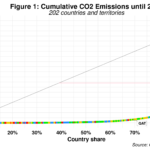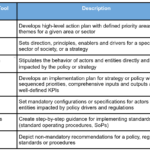Memory tells me this was the fourth time in the last 14 years I have been in Cape Town on official mission. But I have no doubt that this was the first time I was down there to support the Western Cape (WC) provincial government.
Cape Town has a well deserved reputation of being beautiful and having a great climate. It could actually be located in Southern California and sit next to, say, Santa Monica. However, comparisons stop on their tracks when it comes to socio-economic indicators,. Latest figures indicate that unemployment is well over 20% and 38% of the over 1 million plus households that inhabit in the city live in poverty. A city of sharp contrasts indeed. It has always reminded me of Rio de Janeiro, fabelas included – but less obvious to the naked eye. Needless to say, the rest of the Western Cape faces similar issues – and more.
E-government is certainly not new to the province. As early as 2001, the WC already had a strategy which led to the creation of the capeonline.org portal. The portal was supposed to capture people’s inputs and feedback in systematic fashion. Back then, connectivity was still a very scarce and expensive commodity so expectations about people’s involvement in the gateway were overestimated. Not surprisingly, the portal did not quite work and by 2005 it was basically inactive. On the other hand, the WC has usually been ahead of central government when it comes to e-government -among other things.
Efforts to create a new strategy have been ongoing since 2006 on roller-coaster mode. The political change of 2009 with the election of DA brought new players to the field. The Center for e-Innovation (CEI) was then tasked with developing the provincial e-governance strategy and a draft was completed last year. The mission’s BTOR highlights the core issues with the current draft.
There are however other related initiatives which are currently being deployed. One is the provincial broadband programme (see here) which was launched in 2012 and is being implemented by the Department of Economic Development and Tourism with CEI having little to no involvement. The broadband strategy is taking the now classical trickle-down approach which assumes that connectivity alone will carry the day. Evidence suggest this is not the case for developing countries. Furthermore, the departments of Education and Health are already running their own ICT related initiatives -and thus not waiting for CEI to provide policy advice or technical support for that matter. Others might soon follow or, worse still, might keep doing business without using ICTs!
Challenges for the successful completion of the e-government strategy thus seem to be on the rise.
But perhaps the most critical challenge for CEI at this point in time is CEI itself. CEI is well endowed financially and has a great deal of expertise that is mostly focused on technology. The policy area, which was the counterpart for the mission, is still small and does not seem to muster a lot of power. CEI has also been able to survive without having to directly interact with most provincial departments – CEI is part of the WC Premier’s Office and thus has great leverage.
My impression is that CEI is not yet ready to change the way it operates within the broader institutional context. If this is the case then the strategy might continue to be in a limbo by either not being approved at all or by being approved in its current form with little to no buy-in from all other stakeholders. Take your pick.
It is now raining in Cape Town…
Cheers, Raúl





